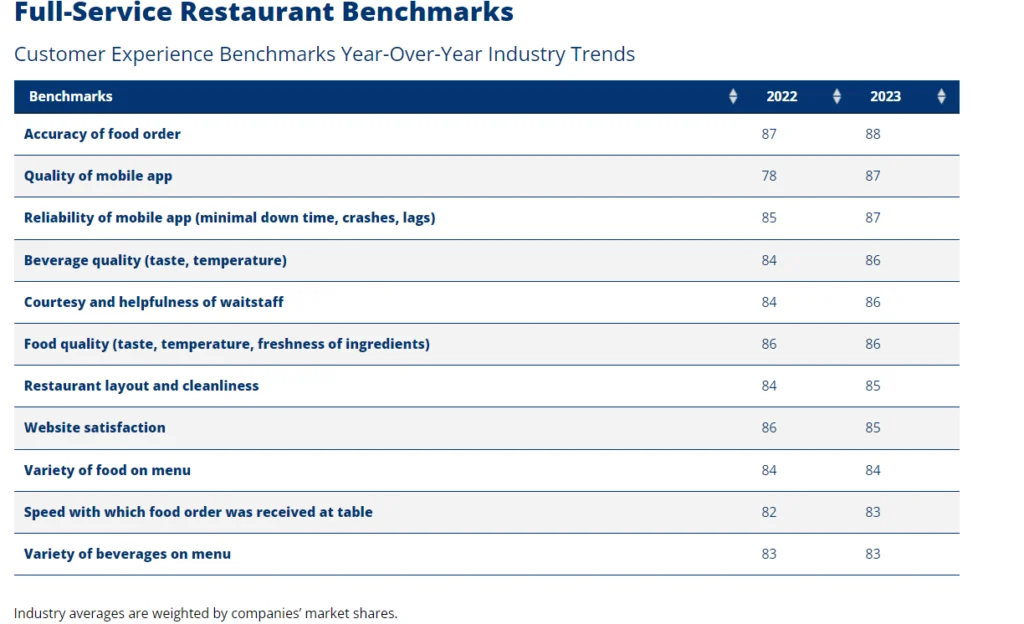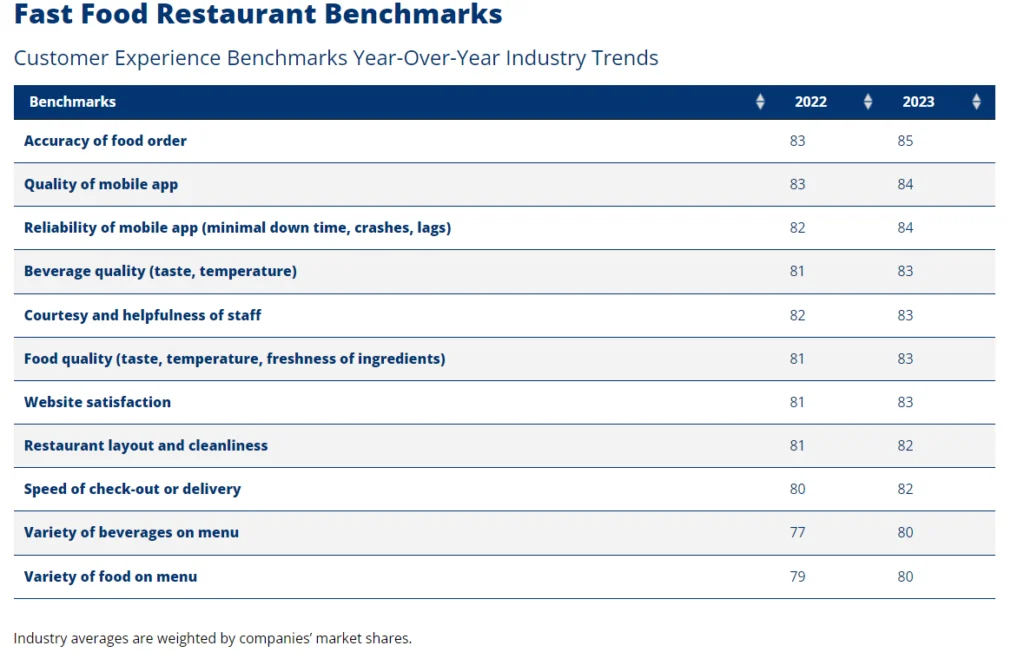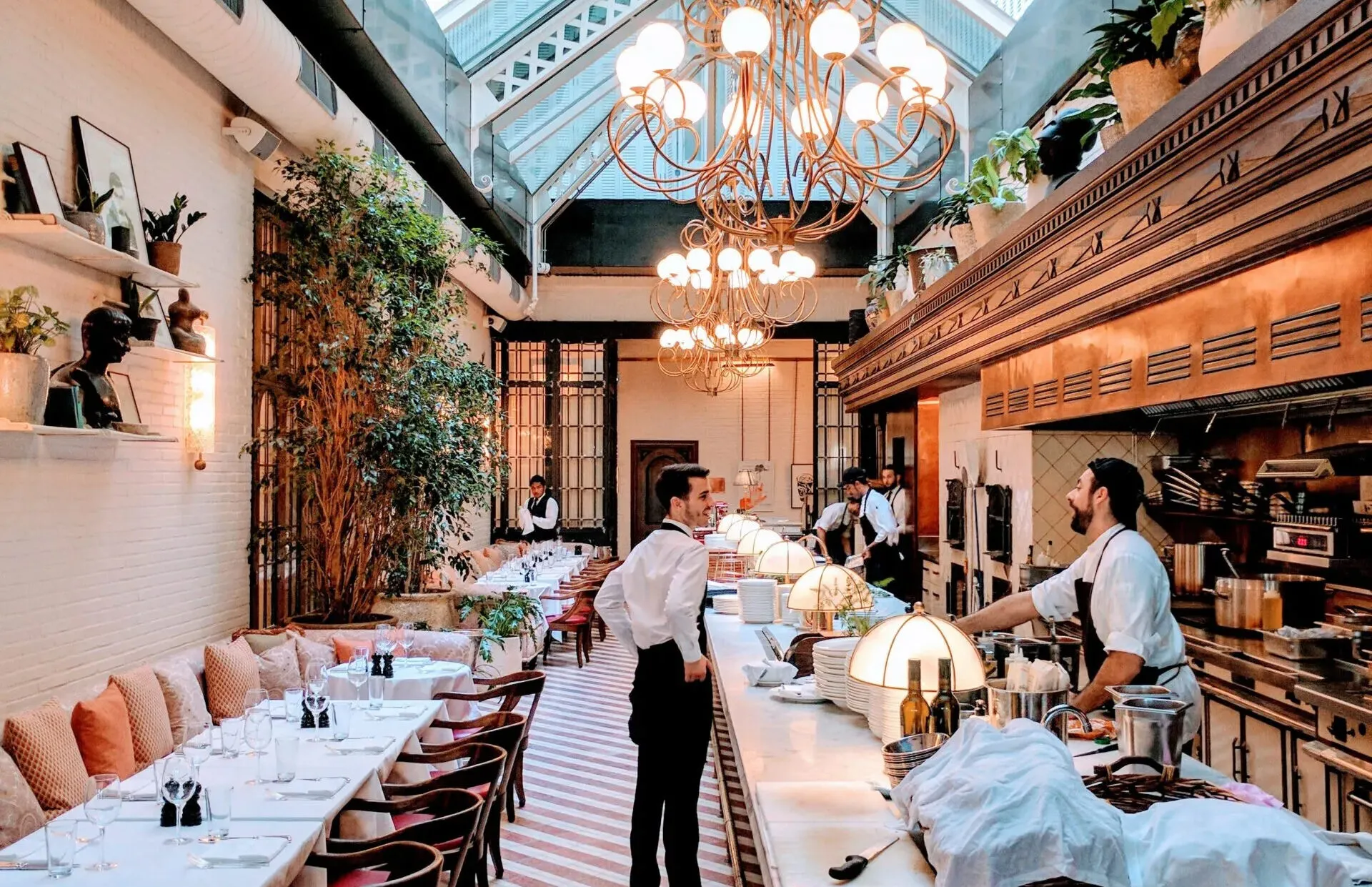Uncover the Power of Your CSAT Score
How satisfied are your customers with your brand? Besides social and review listening, another way to find out what your customers think of your brand is to measure your customer satisfaction (CSAT) score, which is typically obtained through post-dining surveys or feedback forms.
Measuring and calculating customer satisfaction keeps you in the know of the most extensive issues and allows you to track how your improvements boost your score over time.
To evaluate your CSAT score, you need to consider two perspectives: first, assessing your historical performance to, for example, track your team’s progress in enhancing customer experiences, and second, comparing it against industry benchmarks to understand how you fare against competitors or other companies in your field.
How to Calculate Your CSAT Score
Calculating the CSAT score involves a simple formula:
Survey Question: Ask your customers a question such as “How satisfied are you with our product/service?” and provide response options, usually on a scale. The common scale is from 1 to 5, where 1 represents “Very Dissatisfied” and 5 represents “Very Satisfied.”
Other examples of survey questions include:
-
“Please rate the friendliness and helpfulness of our staff during your visit.”
-
“How satisfied are you with the quality of the food you ordered?”
-
“How would you rate the cleanliness and ambiance of our restaurant?”
-
“Did our menu meet your expectations?”
Collect Responses: Gather responses from your customers based on the survey question.
Calculate CSAT Score: Add up the scores from all respondents. Divide the total score by the number of respondents.
CSAT = Number of Respondents ÷ Total Score
This will give you an average satisfaction score.
Present as Percentage: Multiply the average score by 100 to get the CSAT score as a percentage.
CSAT % = CSAT × 100
The resulting CSAT score is usually presented as a percentage, ranging from 0% (all customers are dissatisfied) to 100% (all customers are satisfied).
What is a good CSAT score?
A good score typically falls between 75% and 85%. If you receive a score of 80%, it means that four out of every five customers gave you a positive score, indicating a higher proportion of positive responses compared to negative or neutral ones.
According to Klaus’ latest Customer Service Quality Benchmark Report, the Customer Satisfaction (CSAT) benchmark for 2023 is 85%.
As per the American Customer Satisfaction Index (ACSI), the satisfaction benchmark for fast food restaurants for 2023 is 78%, and for full-service restaurants, it currently stands at 81%.
ACSI breaks it down even further:


CSAT Survey Response Rates
Getting your customers to respond to your CSAT surveys can be challenging—not everyone has the time or patience to participate.
A good CSAT survey response rate typically falls in the range of 20% to 30%, but this can vary depending on the segment and the nature of the survey. Higher response rates are generally more reflective of accurate customer sentiment.
There are various methods you can implement to help increase response rates:
-
Keep your surveys short and to the point. According to a study by HubSpot, if your survey lasts longer than three minutes, you risk losing almost 15% of the participants who begin it. By the time the survey reaches the nine-minute mark, over 40% of the respondents may drop out.
-
Provide incentives; however, make sure that the incentive is valuable enough to motivate customers to participate but not so valuable that it creates an unfair bias.
-
Meet your customers where they are—this means ensuring they can easily access surveys via their mobile phones or any other electronic devices.
-
Ensure that the feedback is based on a fresh and recent experience. The timing of the survey should be close to the customer’s experience with your restaurant.
-
Make it personal. Personalized and friendly language in survey requests tends to engage customers more effectively.
How Can You Improve Your CSAT Score?
Suppose your CSAT score is below the industry benchmark. What steps can you take to improve it? Pay attention to the feedback from your customers: Is the menu lacking variety? Are there concerns about the cleanliness of the dining area? Does the quality of your food and service align with the prices you charge?
For instance, if your customers are dissatisfied with the quality of the food you offer, you need to understand the reasoning behind their sentiments. Is it related to your suppliers? Have you opted for cost-effective ingredient substitutions? Do you have an adequate number of skilled staff to ensure the preparation of high-quality food?
While measuring customer satisfaction through CSAT scores is essential, it alone won’t help you pinpoint exactly why customers feel a certain way toward your brand.
To assess correlations among variables to help you uncover patterns, dependencies, or potential cause-and-effect relationships, you need to aggregate and assimilate vast amounts of online customer feedback data across multiple review channels, leverage Artificial Language Processing (ALP) to analyze human speech, and highlight key concerns and trends, automate the administration and delivery of surveys to collect and analyze feedback at scale and engage with your customers in near real-time, which includes replying to your guests’ negative, neutral, and positive feedback.
To learn more about neutral feedback, be sure to download our free ebook “Why Restaurants Should Not Ignore Neutral Feedback.”
It’s essential to keep in mind that standing out in a crowded industry requires creating experiences that go beyond mere satisfaction. To build lasting loyalty, aim for more than just satisfied customers—strive for loyal advocates.
